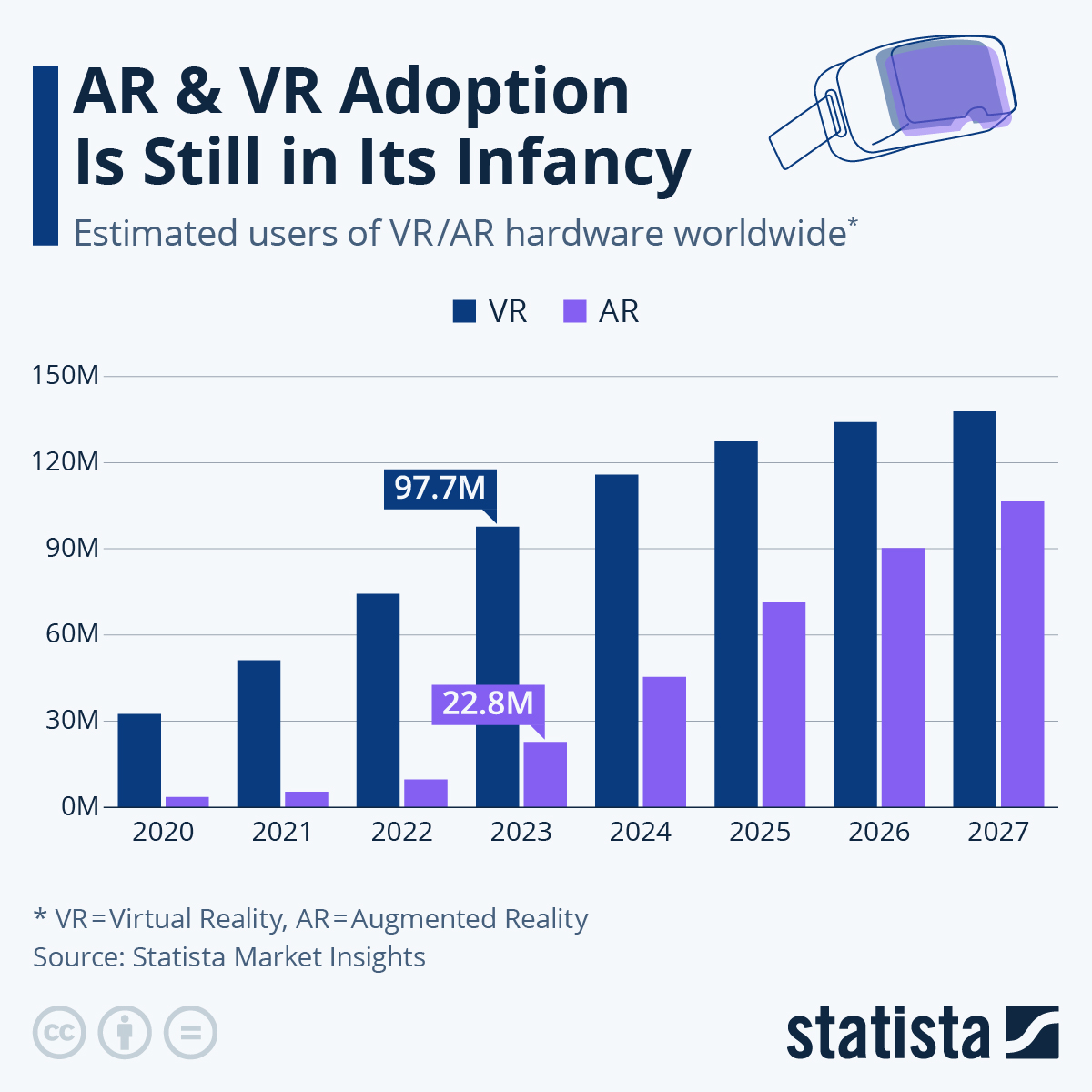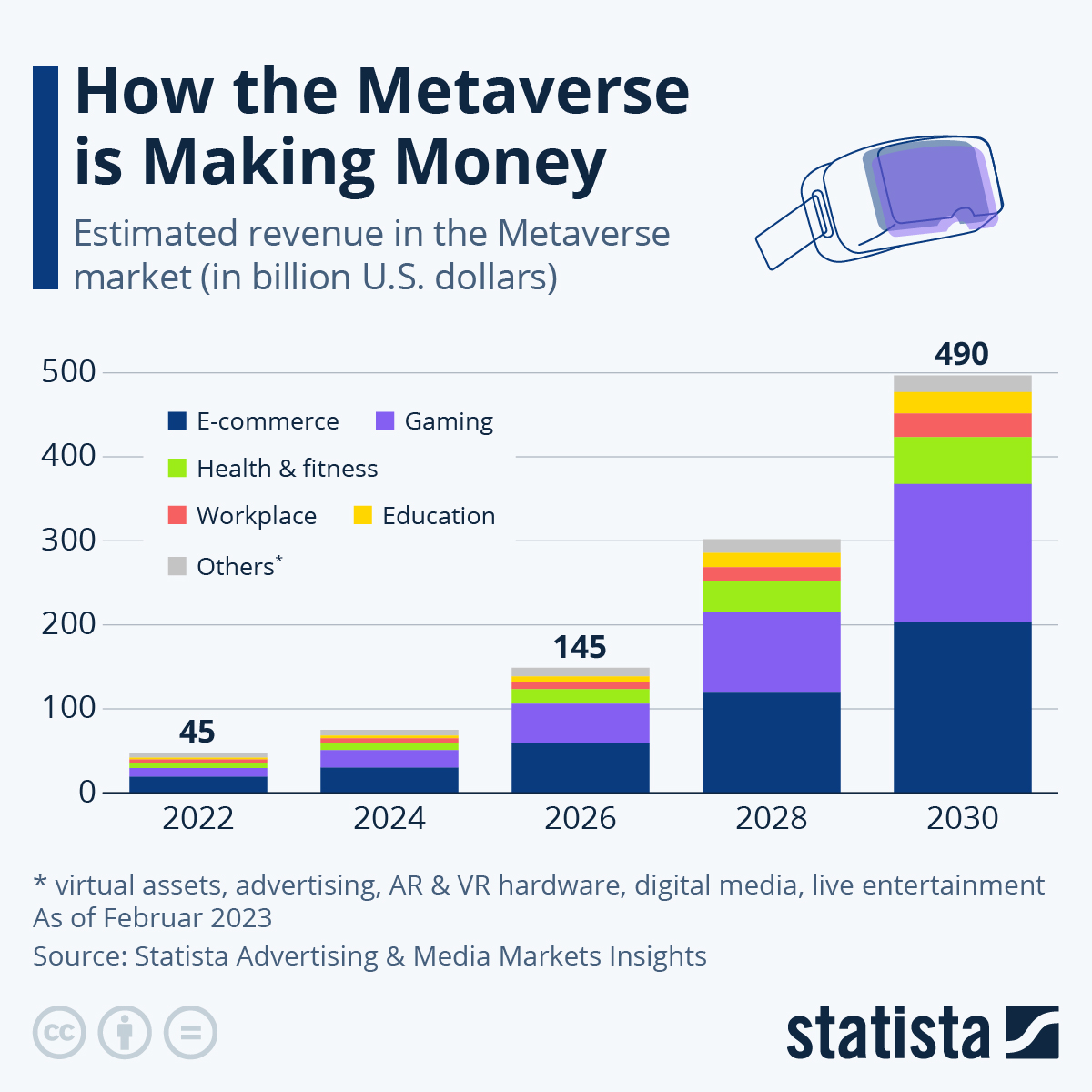Source: Statista
Mark Zuckerberg may be certain that the future of his company lies in the metaverse, but to the uninitiated/skeptics among us, it continues to look like a giant money pit. In the first nine months of 2023, the company’s Reality Labs division, i.e. its forays into AR, VR and metaverse-related software, recorded an operating loss of $11.5 billion, which shows the company might be on course to break its own negative record of $13.7 billion in 2022. That’s on top of a $10.2 billion loss in 2021, $6.6 billion in 2020 and $4.5 billion in 2019, bringing the total wager for Zuckerberg’s big bet close to $50 billion over a period of four years.
And that won’t be the end of it either. Despite aggressive cost-cutting measures, Meta still expects “meaningful” Reality Labs operating losses to increase year-over-year in 2024, while at least dropping the word “significantly” compared to its previous outlook on metaverse losses. In the short run, metaverse investments already weigh heavily on the company’s results. In 2022, the company’s operating margin dropped from 40 to 25 percent, as total operating profit declined from $46.8 billion in 2021 to $28.9 billion last year. In fairness, it must be said that the company’s profitable “Family of Apps” (i.e. Facebook, Messenger, Instagram and WhatsApp) also contributed to the decline, as a broader advertising slowdown and the shift to reels have hurt the top and bottom line. That made the $13.7 billion operating loss of the Reality Labs division stand out and sting even more, though, as it couldn’t be glossed over by growth in Meta’s core business.
Discussing the metaverse in a call with investors last year, Zuckerberg defended his long-term vision: “There’s still a long road ahead to build the next computing platform, but we are clearly doing leading work here. This is a massive undertaking and it’s often going to take a few versions of each product before they become mainstream. But I think our work is going to be of historic importance and create the foundation for an entirely new way that we will interact with each other and blend technology into our lives, as well as a foundation for the long term of our business.”



